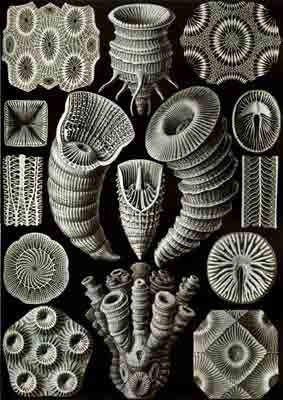Horn Fossil Sea Deep-water Coral mm 78 x 33 x 31 gr 73 Heliophyllum halli Benthic Invertebrata Sessile Coelenterata Cnidaria Anthozoa Rugose Tetracorals Prehistoric Extinct Paleozoic Devonian Collecting Paleontology Museum.
Pleasant fossil find of Tetracorallia Rugosa Stauriida Zaphrentidae from the Upper Devonian of Morocco, representative collectible specimen of excellent quality and very well preserved, with clear details of the horn-shaped Coralite reticulate structure of the calcite Skeleton.
Only a piece, as in photos.
We recommend the small box at this link to contain and display it.
Heliophyllum halli is an extinct deep-water marine solitary coral, with a calcite skeleton and trochoid-shaped theca.
The calyx is deep with well-developed keeled septa of equal size; in the fossil finds the presence of epitheca, fossulae, columella (central column) and calycine platform was found. There are also internal tabulae and small dissepitions, visible especially in the lower part.
Paleoecology: marine, benthic epifaunal, sessile, suspensivorous-microcarnivorous. Found mainly in reef environments.
Rugosa (Milne Edwards & Haime, 1850), also called
Tetracorallia, are an extinct order of solitary and colonial corals that were abundant in Middle Ordovician to Late Permian seas. Solitary rugosans (e.g., Caninia, Lophophyllidium, Neozaphrentis,

Streptelasma) are often referred to as
horn corals because of a unique horn-shaped chamber with a
wrinkled, or rugose, wall. Some
solitary rugosans reached nearly a meter in length. However, some species of rugose corals could form large
colonies (e.g., Lithostrotion). When
radiating septa were present, they were usually in multiples of four, hence
Tetracorallia in contrast to
modern Hexacorallia, colonial polyps generally with
sixfold symmetry.
Rugose corals have a skeleton made of
calcite that is often fossilized. Like modern corals (Scleractinia), rugose corals were invariably
benthic, living on the sea floor or in a reef-framework. Some symbiotic rugose corals were endobionts of Stromatoporoidea, especially in the Silurian period. Although there is no direct proof, it is inferred that these Palaeozoic corals possessed stinging cells to capture prey. They also had tentacles to help them catch prey. Technically they were carnivores, but prey-size was so small they are often referred to as microcarnivores.


